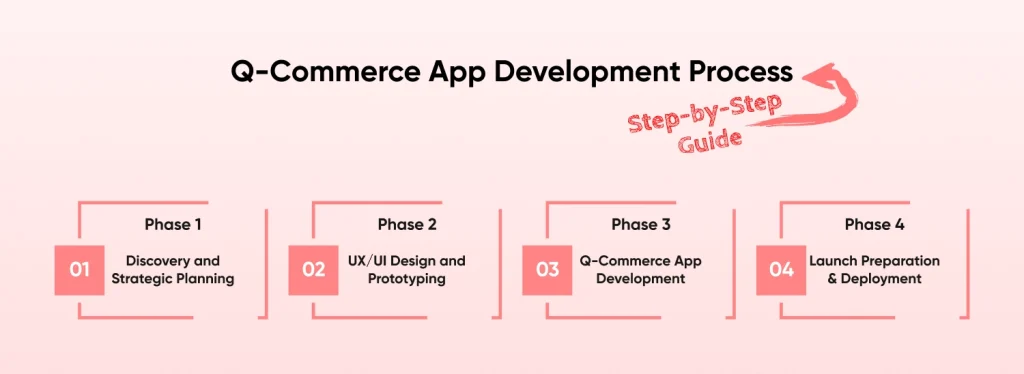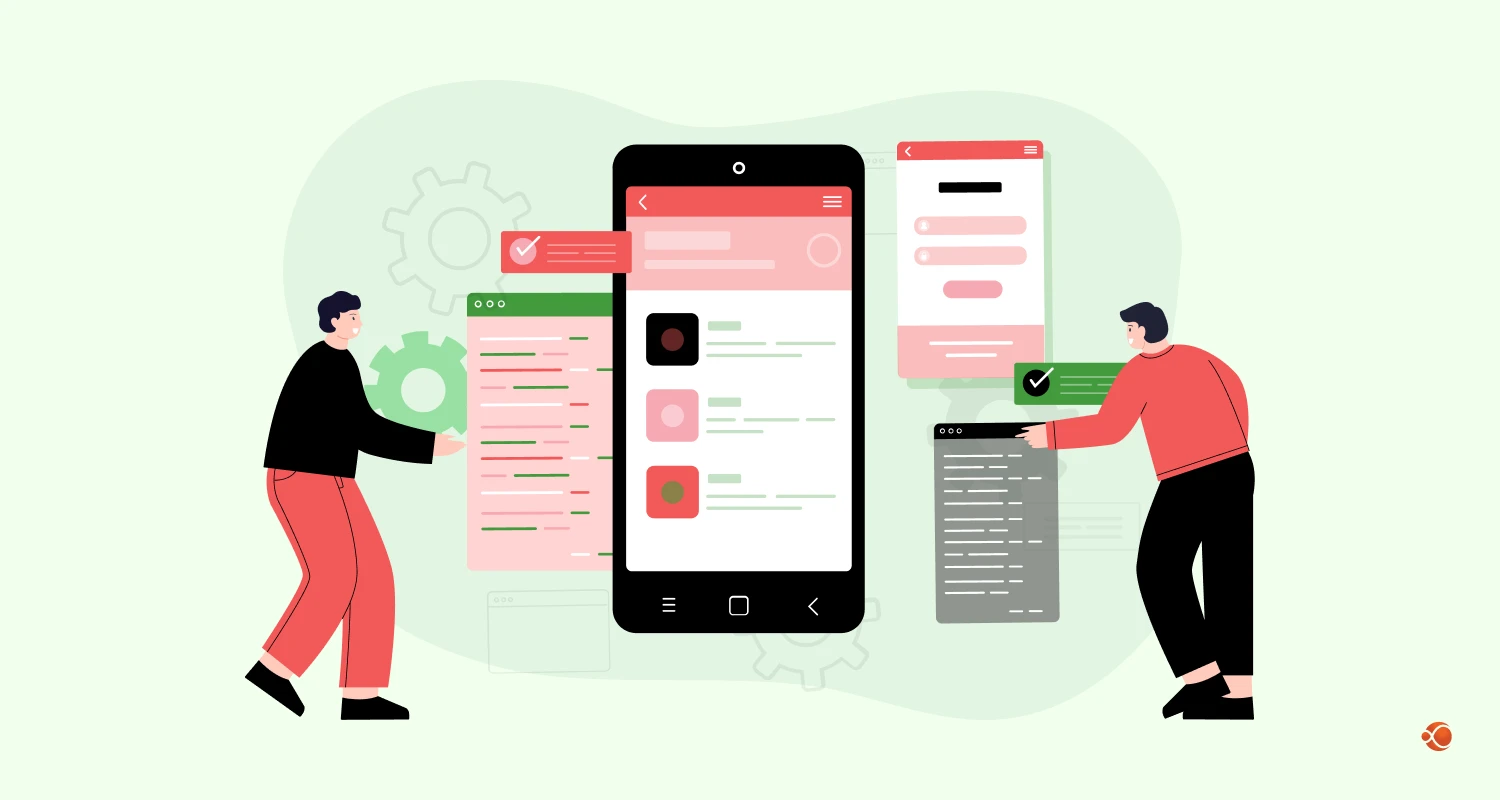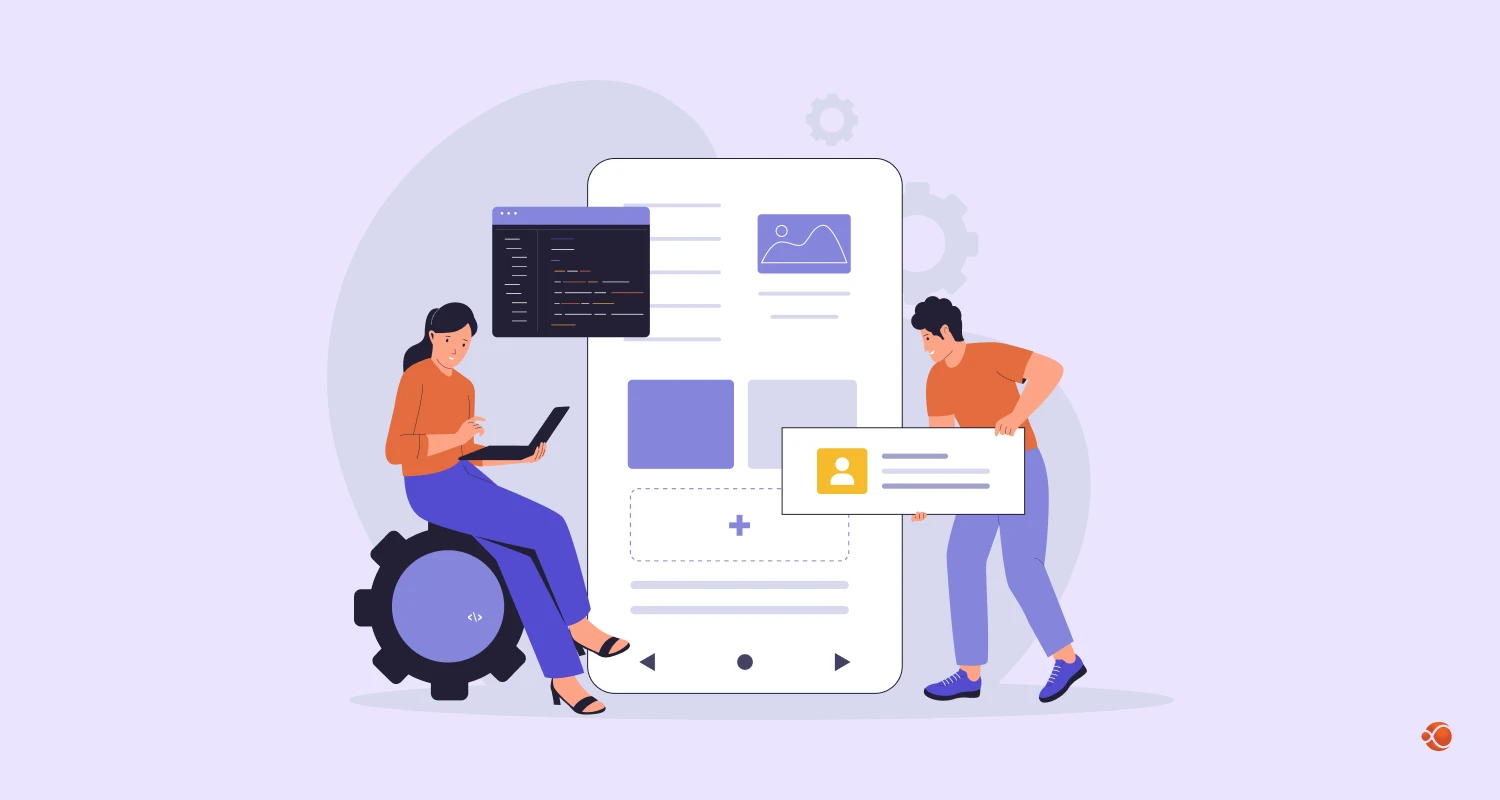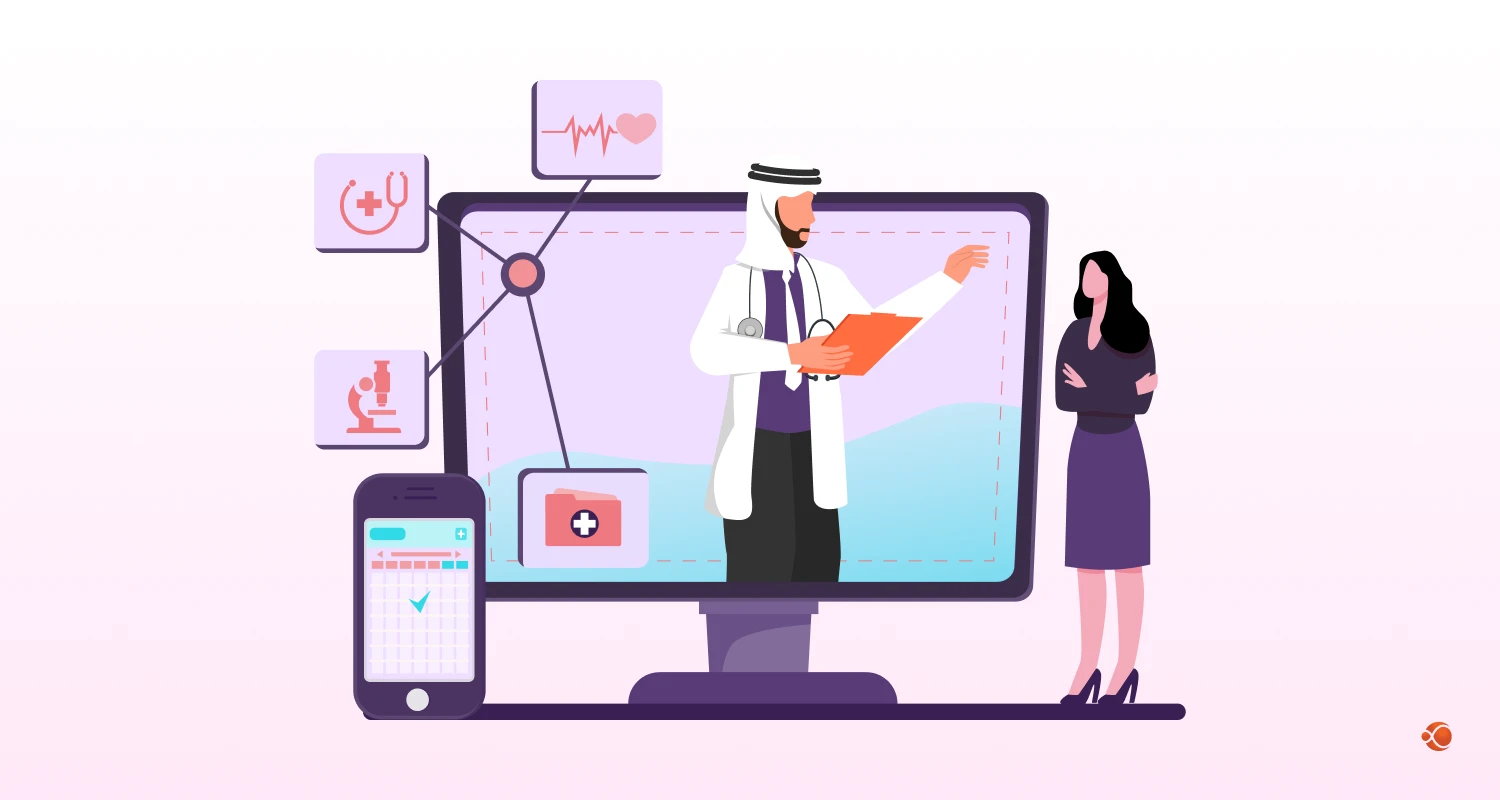The retail landscape has fundamentally shifted toward instant gratification. Quick commerce app development has become the cornerstone of modern retail, with the market projected to grow from $195 billion in 2025 to $283 billion by 2030 a CAGR of 7.74%.
This isn’t just about faster delivery. It’s about reimagining customer expectations around convenience and speed. As a customer, you can order a coffee at midnight with a few taps and have it delivered to your doorstep within 15 minutes; this makes traditional retail almost obsolete.
The transformation extends beyond individual businesses. Urban planning, supply chain optimization, and technology infrastructure all converge to enable this new paradigm. Companies that understand this shift and invest in robust quick commerce app development are guaranteed to capture significant market share.
What is Quick Commerce and Why It Matters for App Development?
Quick commerce differs fundamentally from traditional e-commerce through its focus on ultra-fast delivery of everyday essentials within 10-30 minutes. Unlike conventional platforms prioritizing extensive catalogs and next-day delivery, q-commerce app development focuses on hyperlocal models using “dark stores” or micro-fulfillment centers. Just as social media apps were trending at one point and you would find people looking to develop an app like Instacart, people are now searching for “10 best grocery app like Coles” for quickcommerce grocery app development.
Core Pillars of Quick Commerce App Architecture
Just like any other industry, Quick Commerce is based on certain principles or core pillars that must be kept in mind when planning the quick commerce app architecture and monetization strategies to stand out in the market. Here are the main pillars for Quick Commerce app development:
| Pillar | Why It Matters |
| Real-Time Inventory Awareness | Customers need to see exactly what’s in stock to avoid disappointment at checkout. |
| Fast and Flexible Fulfillment | Speed is the core promise of Q-commerce fulfillment must happen within minutes. |
| Instant and Reliable Order Handling | Orders must be processed the moment they’re placed, with zero friction or delay. |
| Reliable Infrastructure | The app needs to provide high uptime to handle volumes of transactions concurrently. |
| Smart Pricing and Promotions | Indulge in promotions and offers like Dynamic pricing, discounts, and flash deals to keep customers engaged and returning. |
| Omnichannel User Experience | A consistent, intuitive experience across web, mobile, and in-app platforms is key. |
| Secure and Effortless Payments | Fast, one-tap payment experiences that are also secure build trust and loyalty. |
| Hyperlocal Intelligence and Forecasting | Predicting demand and optimizing supply at the neighborhood level drives efficiency. |
| Transparent Delivery Tracking | Real-time updates and ETAs keep customers informed and reduce support load. |
| Personalized Shopping Journeys | Tailored recommendations and content boost conversion and retention. |
Market Dynamics Driving Quick Commerce Growth
There are many reasons behind quick commerce growth that are important to understand to truly build a custom q-commerce app that matches all the customer needs:
- Urban Density: The dense metropolitan areas are ideal marketplace for quick commerce setups. With such rich customer density, micro-fulfillment centers are able to fulfil instant orders by optimizing shorter delivery routes.
- Smartphone Penetration: Universal smartphone access has democratized on-demand ordering, creating consumers who expect instant gratification.
- Behavioral Changes: Post-pandemic lifestyles played an important role with customers prioritizing convenience and no-contact delivery.
- Technology Advancement: Sophisticated logistics algorithms, real-time inventory management, and AI-powered demand forecasting make rapid delivery economically viable.
Essential Quick Commerce App Features for Success
Building competitive quick commerce apps requires a sophisticated multi-stakeholder ecosystem. Each component must work seamlessly to deliver ultra-fast experiences. Here’s a detailed breakdown of essential quick commerce app features:
Customer-Facing Quick Commerce App Features
Smart Product Discovery
- Intelligent search with auto-complete and typo tolerance
- AI-driven personalized recommendations based on purchase history
- One-tap quick reorder for frequently purchased items
- Visual search capabilities for image-based product discovery
- Intuitive category-based navigation for effortless browsing
Frictionless Ordering Process
- Streamlined onboarding with social login and phone verification
- Express checkout with saved payment methods and addresses
- Real-time inventory updates to prevent order cancellations
- Dynamic pricing based on location and promotional offers
- Order customization with special instructions and delivery notes
Transparent Delivery Experience
- Live GPS-based order tracking with accurate ETAs
- Multi-channel notifications via push, SMS, and email
- Direct messaging with delivery personnel
- Photo confirmation and digital receipts for proof of delivery
- Detailed delivery instructions with gate codes and landmarks
Merchant and Admin Panel Features
Advanced Inventory Management
- Real-time stock tracking across multiple fulfillment centers
- AI-powered automated reordering based on demand patterns
- Seamless supplier integration and catalog management
- Automated expiry management with smart discounting
Comprehensive Order Management
- Automated order routing to nearest fulfillment centers
- Efficient batch processing for optimal picker productivity
- Quality control with product verification and substitution management
- Streamlined return processing and inventory reconciliation
Analytics and Business Intelligence
- Real-time performance dashboards for sales and operational metrics
- AI-powered demand forecasting for inventory planning
- Customer behavioral analytics and segmentation
- Comprehensive financial reporting with profitability analysis
Delivery Partner App Features
Route Optimization Technology
- AI-powered route planning considering traffic and weather
- Multi-order batch delivery optimization
- Turn-by-turn navigation with real-time traffic updates
- Geofenced delivery zones for efficient territory management
Performance Tracking Systems
- Transparent earnings dashboard with payment tracking
- Delivery time metrics and customer rating systems
- Schedule management and availability settings
- Training resources and onboarding materials
Q-Commerce App Development Process: Step-by-Step Guide

The quick commerce app development process requires strategic planning that balances speed-to-market with scalability and user experience.
Here’s a complete q-commerce app development roadmap to create a shopping app:
Phase 1: Discovery and Strategic Planning (4-6 weeks)
Market Research and Competitive Analysis
Conduct deep dives into local and global competitors, identifying market gaps and opportunities. Perform comprehensive customer research through interviews and surveys to understand pain points. Analyze total addressable market (TAM) and serviceable addressable market (SAM) for accurate sizing.
Business Model Definition
Define revenue streams including commission structures, delivery fees, subscription models, and advertising revenue. Calculate unit economics including customer acquisition cost (CAC), lifetime value (LTV), and contribution margins. Choose operational models between dark stores, retail partnerships, or hybrid approaches.
Technical Architecture Planning
Make strategic platform decisions between native, cross-platform, or progressive web apps. Select appropriate technology stacks for frontend, backend, database, and cloud infrastructure. Plan integration requirements for third-party services including payments, maps, and analytics.
Phase 2: UX/UI Design and Prototyping (6-8 weeks)
User Experience Design
Create detailed user journey mapping for all stakeholders customers, merchants, and delivery partners. Develop comprehensive information architecture with intuitive navigation patterns. Build low-fidelity wireframes focusing on functionality and user flow optimization.
Visual Design System
Establish strong brand identity including logos, color palettes, and typography guidelines. Hire UI/UX designers to create reusable UI components and brand elements for consistency across the digital assets.
Interactive Prototyping
Develop high-fidelity mockups with detailed visual representations of key screens. Create clickable prototypes for stakeholder review and comprehensive user testing. Validate designs through A/B testing of critical user flows and interface elements.
Phase 3: Q-Commerce App Development (12–20 weeks)
Frontend Development
We’ll design and build fast, reliable mobile apps for both iOS and Android. If needed, a cross-platform solution can also be used to provide consistency across devices while keeping development efficient.
For the business side, we’ll develop easy-to-use web dashboards for merchants and operations teams making tasks like order management, tracking, and reporting simple and straightforward. Real-time features such as live order tracking, instant notifications, and in-app chat will help keep customers informed and teams connected every step of the way.
Back-end Development
On the backend, we’ll build robust and well-documented RESTful APIs to power all app functionality. The database will be designed to scale easily, handling everything from users and products to orders and analytics. Complex business logic like order processing, inventory tracking, and dynamic pricing will be implemented to ensure smooth operations behind the scenes.
Third-Party Integrations
For payments, we’ll integrate secure gateways like Stripe, PayPal, and local providers to handle smooth and seamless transactions. Shipping and delivery services will connect through leading eCommerce shipping APIs. You can also integrate mapping services such as Google Maps or Mapbox. SMS and Push Notifications can be handled by services like Twilio and other trusted providers.
Phase 4: Launch Preparation & Deployment (4–6 weeks)
Comprehensive Testing
Before launch, we’ll conduct thorough beta testing . For this we assemble a select group of users to gather real-world feedback and fine-tune the app. This includes end-to-end testing of the entire fulfillment and delivery process to ensure everything works perfectly. All third-party integrations will be validated, and system performance will be carefully monitored to set strong operational baselines.
Launch Strategy Implementation
We’ll start with a soft launch in limited regions to make sure the app runs smoothly in real-world conditions. At the same time, marketing campaigns will be rolled out to create excitement and attract early users. Behind the scenes, staff training, inventory preparation, and clear process documentation will ensure everything is ready for full-scale operation.Launch Strategy Implementation
Execute soft launches in limited geographic areas for operational validation and refinement. Develop comprehensive marketing campaigns for pre-launch buzz generation and initial user acquisition.

Quick Commerce App Cost Breakdown: Investment Analysis
Quick commerce (Q-commerce) focuses on ultra-fast delivery usually within 10 to 30 minutes of everyday essentials. Unlike traditional e-commerce, which relies on large catalogs and next-day shipping, Q-commerce uses local “dark stores” or micro-fulfillment centers to serve nearby customers quickly.
Just as there was once a rush to build social media apps like Instagram, today businesses are racing to develop grocery delivery apps search terms like “best grocery app like Coles” reflect this growing demand. For app developers, speed, convenience, and hyperlocal operations are now key priorities.
Quick Commerce App Development Cost Breakdown As Per Complexity
| Tier | Cost Range | Timeline | Best For |
| MVP | $40,000 – $80,000 | 4-6 months | Proof of concept, market validation |
| Mid-Range | $80,000 – $200,000 | 6-10 months | Established businesses, multi-city operations |
| Enterprise | $200,000 – $500,000+ | 10-15 months | Large enterprises, complex business models |
MVP Features and Limitations
Minimum viable products include basic customer apps with essential ordering functionality, simple admin dashboards for basic management, standard delivery tracking capabilities, and basic payment integration. This tier suits businesses focused on proof of concept and initial market validation with small-scale operations. You can opt for AI MVP development services from a reliable software development company to test out your concept before committing to full-scale development.
Mid-Range Solution Capabilities
The cost for mid-range quickcommerce app development solutions range between $80,000 USD to $200,000 USD. It offers advanced customer personalization features, complete admin dashboards with detailed analytics, real-time inventory management systems, and multi-payment gateway integration. These solutions include advanced analytics and reporting tools, dedicated delivery partner apps, and robust customer support systems.You can get a better fair estimation for such apps with help of a professional ecommerce software development company.
Enterprise Solution Features
Enterprise-grade solutions incorporate AI-powered recommendations and demand forecasting, advanced logistics optimization algorithms, and multi-vendor marketplace functionality. They include white-label solutions for franchising, enterprise integrations with ERP and CRM systems, and comprehensive business intelligence platforms. Make sure to opt for a mobile app development company that has access to both – iOS and Android app developers alongside React Native, Flutter and other frameworks.
Ongoing Operational Costs
Annual Maintenance: 20-30% of initial development cost
- Bug fixes and performance improvements
- OS updates and compatibility maintenance
- Security patches and compliance updates
- Feature enhancements based on user feedback
Infrastructure Costs: $2,000 – $20,000+ monthly
- Cloud hosting and storage solutions
- Content delivery network (CDN) services
- Database hosting and management
- Third-party service subscriptions
Marketing and User Acquisition: $50,000 – $500,000+ annually
- Digital marketing campaigns across multiple channels
- Influencer partnerships and brand collaborations
- Referral programs and customer incentives
- Promotional offers and discount campaigns
Quick Commerce App Tech Stack: Technology Choices
Picking the right tech stack is important to develop a quick commerce app that’s fast, scalable, and easy to maintain. Here’s a quick overview of the recommended tools and technologies:
Frontend Technologies for Quick Commerce Apps
Mobile Development Options
- Native Development: iOS using Swift/SwiftUI for optimal performance and platform-specific features; Android using Kotlin/Jetpack Compose for modern, efficient development
- Cross-Platform Solutions: React Native for JavaScript-based development with near-native performance; Flutter for Google’s UI toolkit with excellent performance and single codebase
- Web Development: React.js for component-based architecture with excellent ecosystem; Vue.js for progressive framework with gentle learning curve
Backend Technologies
Server-Side Language Choices
- Node.js: JavaScript runtime with excellent real-time capabilities for quick commerce features
- Python: Django/Flask frameworks for rapid development and AI integration capabilities
- Go: High-performance language ideal for scalable microservices architecture
Database Solutions for Quick Commerce
Relational Databases
- PostgreSQL: Advanced open-source database with excellent JSON support for flexible data models
- MySQL: Popular choice with proven performance for high-transaction applications
NoSQL Database Options
- MongoDB: Document-based database for flexible data models and rapid development
- Redis: In-memory database for caching and real-time features
- Elasticsearch: Search and analytics engine for advanced product discovery
Cloud Infrastructure Choices
Amazon Web Services (AWS)
- EC2 for scalable compute resources
- RDS for managed database services
- S3 for reliable file storage
- Lambda for serverless function execution
Google Cloud Platform (GCP)
- Compute Engine for virtual machine management
- Cloud SQL for managed database solutions
- Cloud Storage for file management
- Cloud Functions for serverless computing
Revenue Models for Quick Commerce Apps
So you’re running a quick commerce app and wondering how to actually make money from it? Smart question. The truth is, you can’t just rely on one income stream if you want to build something that lasts.
Here’s how the most successful apps are doing it:
1. Commission-Based Model
This is your bread and butter. Every time someone places an order, you take a cut somewhere between 15% and 30% works for most businesses. The beauty of this approach is that as your app grows, your income grows right alongside it. But here’s the thing: don’t get greedy. If you squeeze your merchants too hard, they’ll jump ship faster than you can say “customer acquisition cost.”
2. Delivery Fee Strategy
Most people expect to pay something for delivery anywhere from $2 to $5 feels fair. You can get clever here too. Maybe charge extra for those orders going way across town, or bump up prices when everyone’s ordering at once on Sunday night. The free delivery trick works like magic: tell people they get free delivery if they spend $25 or more, and watch them add random stuff to hit that threshold.
3. Subscription & Membership Options
This is where things get interesting. Charge people maybe $8 to $12 a month, and suddenly they feel like VIPs. Free delivery, early access to sales, maybe they get to skip the line when customer service is swamped. People love feeling special, and you love that predictable monthly cash flow.
4. Other Revenue Opportunities
- Advertising: Local businesses will pay good money to show up first when people search for “pizza” or “batteries.” It’s like digital real estate.
- White-Label Solutions: Once you’ve figured out the tech, why not sell it to someone who wants to start their own delivery business in another city?
- Financial Services: Partner with companies that do buy-now-pay-later, or help small businesses process payments. There’s money in being the financial middleman.
- Data Insights: You know what people buy and when they buy it. That information is gold to companies trying to figure out market trends. Just make sure you keep it anonymous and above board.
The secret sauce isn’t picking just one of these it’s combining them in a way that makes sense for your customers and your business.
Future of Mobile App Development in Quick Commerce
The quick commerce landscape continues evolving rapidly. To get the most out of this technological advancement and dynamic consumer expectations, hire mobile app developers that implement these trends for future-proofing your platform.
AI and Machine Learning Integration
- Hyper-Personalization: AI algorithms anticipate customer needs based on historical data, weather patterns, events, and personal schedules.
- Dynamic product recommendations: adapt in real-time based on browsing behavior and similar customer profiles.
- Operational Optimization: Advanced machine learning models predict demand patterns for optimal inventory management.
- AI-powered route optimization: adapts to real-time traffic, weather, and delivery priority conditions.
Sustainability and Environmental Responsibility
- Green Delivery Solutions: Electric vehicle fleets, carbon footprint tracking with offset options, and sustainable packaging solutions become standard features.
- Consolidated deliveries: Reduce environmental impact through optimized routing algorithms.
- Circular Economy Integration: Return and reuse programs, waste reduction through AI-powered inventory management, and local sourcing preferences minimize environmental impact.
Advanced Delivery Technologies
- Autonomous Delivery Systems: Drone delivery for suitable environments, autonomous vehicles for last-mile delivery, and ground-based delivery robots for short-distance deliveries represent the future of quick commerce logistics.
- Alternative Delivery Methods: Secure locker networks, staffed pickup stations, and partnership networks with existing retail locations provide flexible delivery options.
Choosing Your Quick Commerce App Development Approach
The decision between building from scratch, using existing platforms, or adopting hybrid approaches significantly impacts time-to-market, costs, and competitive positioning.
When to Build QuickCommerce App from Scratch
Custom development suits businesses with unique business models requiring unavailable features, significant funding ($500,000+) for technology development, experienced technical teams, and flexible timelines allowing 12-18 months for initial launch.
- Advantages: Complete feature control, unlimited customization, intellectual property ownership, specific use case optimization, and no recurring platform fees.
- Disadvantages: High upfront investment, extended development timelines, technical complexity and risk, ongoing maintenance responsibility, and slower time-to-market.
Platform-Based QuickCommerce App Development Solutions
Existing platforms suit businesses needing quick market entry (1-3 months), limited technical resources, proof-of-concept validation, standard requirements, and capital efficiency preferences.
- Advantages: Rapid deployment, lower initial investment, proven technology, built-in integrations, ongoing support, and reduced technical risk.
- Disadvantages: Limited customization, ongoing subscription costs, platform dependency, feature limitations, and less competitive differentiation.
Hybrid QuickCommerce Application Development Approach Strategy
Many successful companies adopt phased approaches: launching with platform solutions for quick market entry, gathering customer data for business model validation, identifying specific customization needs, developing custom components for competitive advantages, and gradually transitioning to fully custom solutions based on ROI justification.
How to Ensure Success of Your QuickCommerce App?
- User Experience Focus: Every interaction must be optimized for speed and simplicity
- Technology Investment: Robust architecture and smart algorithms are non-negotiable
- Unit Economics Understanding: Profitability requires careful balance of pricing, costs, and efficiency
- Scalability Planning: Build systems handling rapid growth and geographic expansion
- Customer-Centric Approach: Continuous feedback and iteration based on real user behavior
Quick commerce has a promising future. With technologies like AI, autonomous delivery, and eco-friendly solutions opening exciting new opportunities, any organization that plans and executes well with help of a reliable mobile and web app development company, they are guaranteed to grow and scale in this competitive space.
Whether you’re a startup with fresh ideas or an established retailer stepping into Q-commerce, the potential is huge. The market is evolving quickly, customer expectations are getting higher, and the competition is just starting to take shape.
Now is the time to build your Q-commerce app with these insights and lead the way in the future of retail.
Conclusion: Seizing the Quick Commerce Opportunity
Quick commerce app development represents one of the most promising opportunities in modern retail.
Success requires more than speed it demands sophisticated understanding of technology, operations, customer psychology, and market dynamics. Companies that seamlessly integrate ultra-fast delivery with exceptional user experience, operational efficiency, and sustainable business models will dominate this space.
Partner with an experienced ecommerce software development company.
Contact UsFAQs on Quick Commerce App Development
How Long Does It Take to Develop a Q-Commerce App?
A basic q-commerce app typically takes 4-6 months to build from scratch, while a feature-rich platform with advanced functionality can take 8-12 months. The timeline depends on your specific requirements, team size, and whether you’re building custom features or using existing solutions.
How Does a Quick Commerce App Work?
Customers browse products on the app, place orders, and get deliveries within 10-30 minutes from nearby dark stores or partner retailers. The app connects to inventory management systems, dispatches orders to delivery partners, and uses real-time tracking to ensure ultra-fast fulfillment.
How Much Does It Cost to Build a Quick Commerce App?
The estimated cost for an MVP Quick Commerce App ranges from $40,000 to $80,000, while a fully-featured platform with advanced capabilities can cost $200,000 to $500,000 or more. The final price depends on features, platform complexity, development team location, and ongoing maintenance requirements.
How to Choose the Right Development Partner for a Quick Commerce App?
Look for a team with proven experience in on-demand delivery apps, strong technical skills in real-time features, and a solid portfolio of similar projects. Make sure they understand the unique challenges of quick commerce like inventory management, route optimization, and can provide ongoing support post-launch.







